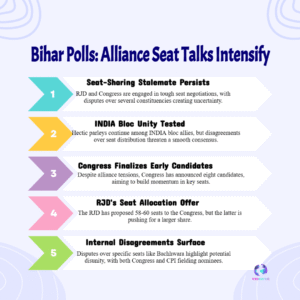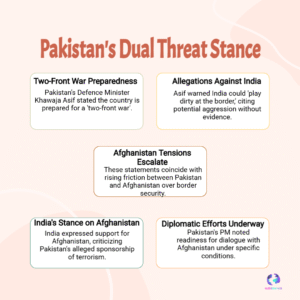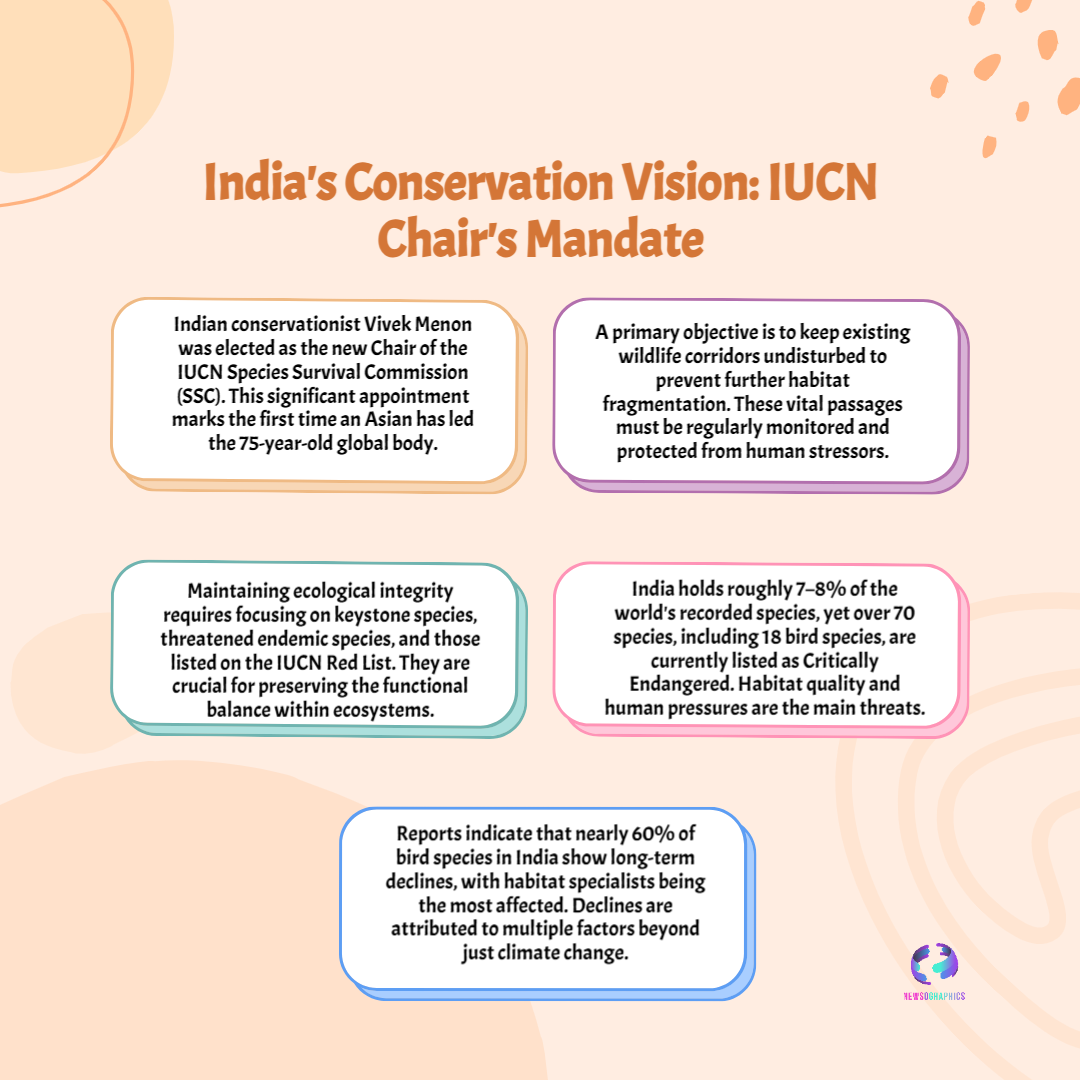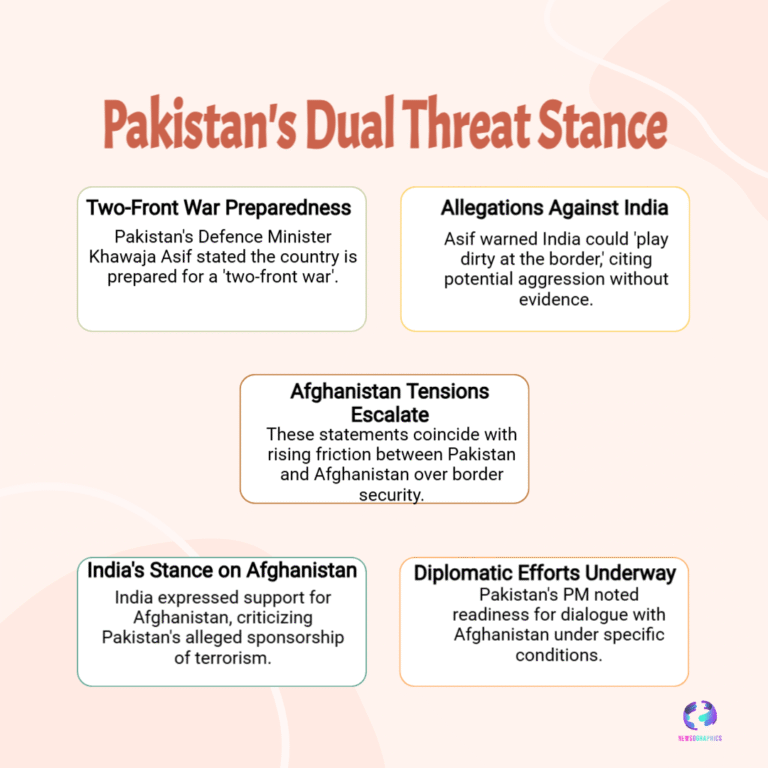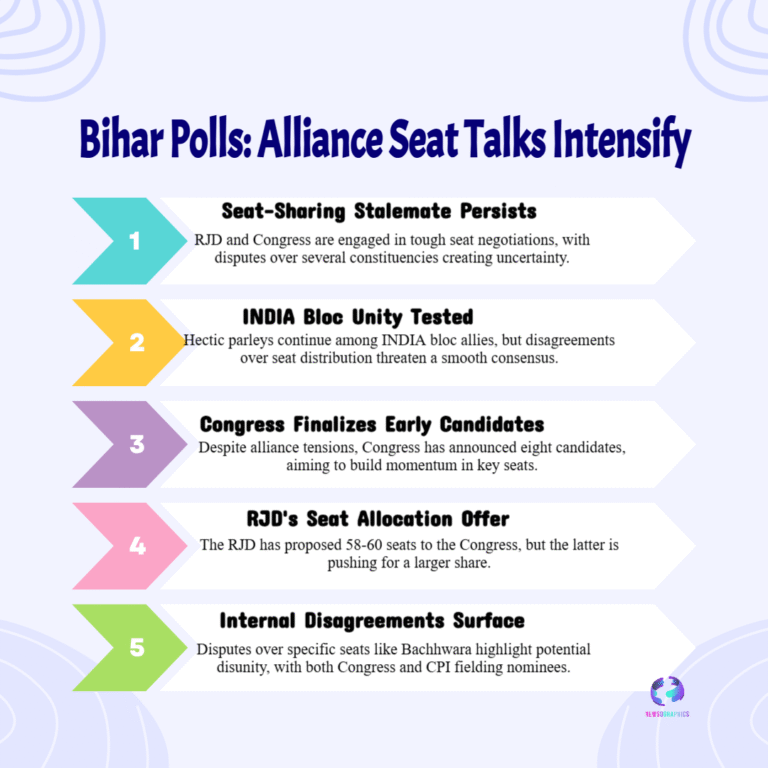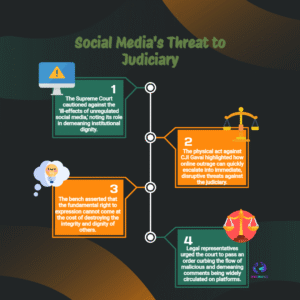Vivek Menon, newly elected chair of the IUCN Species Survival Commission, warns India’s wildlife corridors must remain undisturbed to save endemic and keystone species. Read a 600-word analysis of threats, species at risk and policy steps.
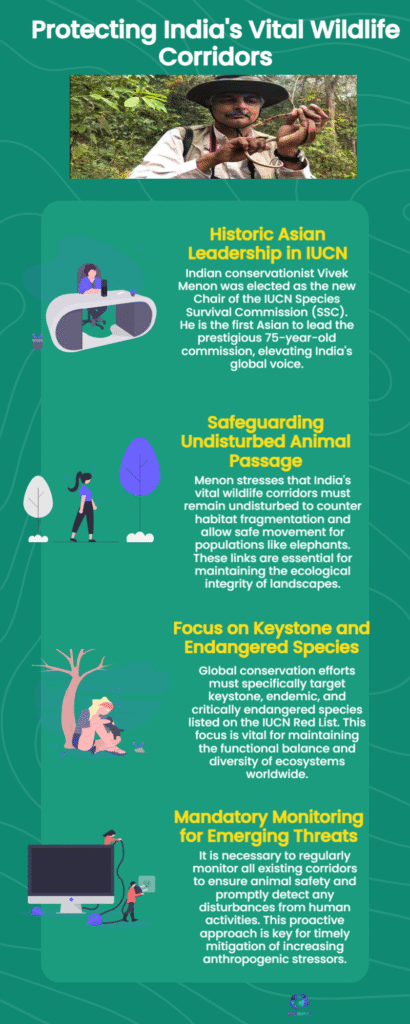
Indian conservationist Vivek Menon was elected chair of the IUCN Species Survival Commission (SSC), becoming the first Asian to hold the post in the commission’s 75-year history. In his opening remarks Menon stressed a clear and urgent priority: India’s wildlife corridors must be left undisturbed, monitored and protected if the country’s biodiversity is to survive and recover. He framed corridors as the linchpin for ecological integrity, gene flow and the long-term survival of endemic and keystone species.
India is home to a substantial share of global biodiversity—roughly 7–8% of recorded species—and hosts tens of thousands of plants and animals. Menon highlighted that while some flagship species such as tigers and elephants show pockets of stability, many populations are fragmented and declining. He named more than 70 species listed as Critically Endangered, including the Namdapha flying squirrel and the Chinese pangolin, and pointed to 18 bird species — among them the White-winged Duck, Great Indian Bustard and Bengal Florican — that need immediate attention.
Habitat fragmentation is the principal cause of corridor loss. Menon explained that corridors are created when once-continuous habitats are cut by roads, development, mining, agricultural expansion and unregulated land use. When corridors are severed, animal movements are restricted, genetic bottlenecks emerge, and conflict with humans rises as wildlife seeks food and mates in fragmented patches. He therefore urged routine monitoring of corridors to detect disturbances early and implement timely mitigation.
Practical conservation demands both policy and on-the-ground action. Menon recommended protecting existing corridor routes from further infrastructure damage, applying wildlife-friendly designs in new roads and powerlines, and integrating corridor maps into all stages of regional planning. Emphasis on keystone species is strategic: maintaining viable populations of species that shape ecosystem function helps preserve entire ecological communities.
Bird declines provide a clear indicator of wider habitat stress. Menon cited the State of India’s Birds findings that while a few generalist species thrive, nearly 60% of bird species show long-term declines and 40% are currently trending downward. Wetlands, grasslands and certain forest specialists are most affected — habitats that are especially sensitive to fragmentation and land-use change. Protecting corridors linking such habitats therefore becomes a conservation multiplier: it benefits migratory and resident birds as well as mammals, reptiles and amphibians dependent on connected landscapes.
Menon’s chairmanship arrives at a crucial moment for policy action. With growing infrastructure pressure and competing land uses, his call to action is to embed corridor protection into national and state planning, fund restoration projects, and strengthen legal and administrative safeguards for transit routes used by wildlife. For citizens and policymakers, the takeaway is direct: corridors are not optional luxury spaces — they are essential ecological infrastructure. Menon’s message is a timely reminder that safeguarding biodiversity depends on protecting the threads that bind landscapes together, not just the patches we reserve for wildlife.


